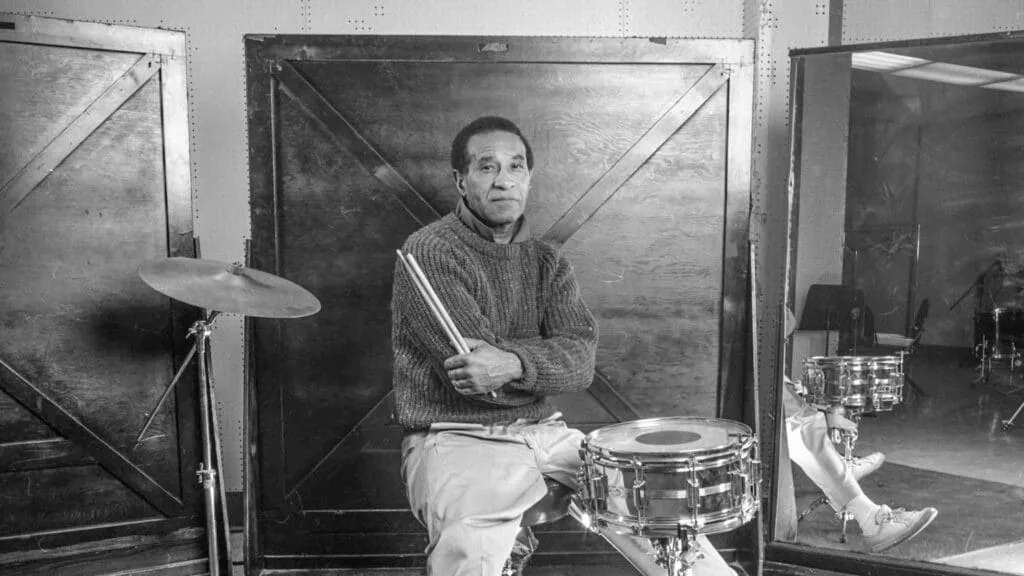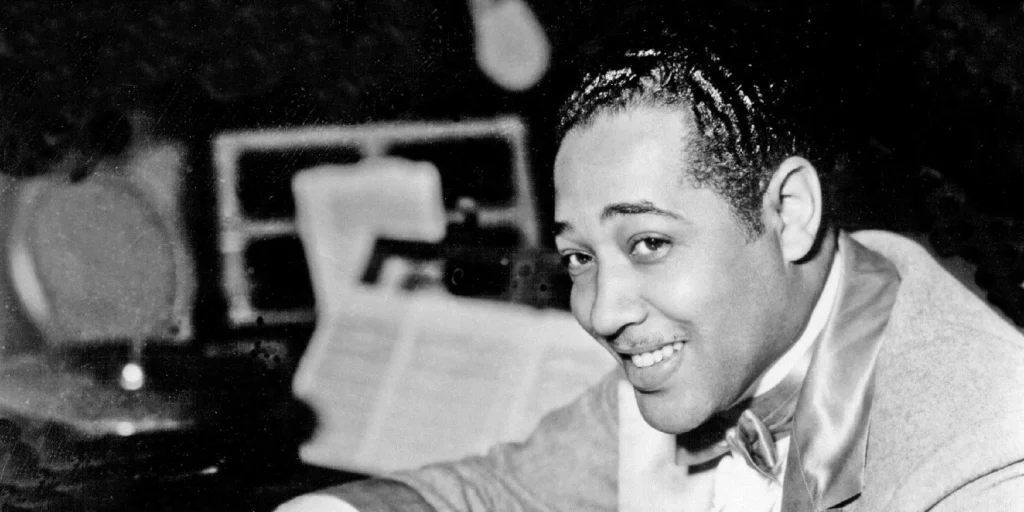Max Roach

Maxwell Lemuel Roach was an African-American jazz drummer and composer. A pioneer of bebop, he worked in many other styles of music, and is generally considered one of the most important drummers in history. He worked with many famous jazz musicians, including Clifford Brown, Coleman Hawkins, Dizzy Gillespie, Charlie Parker, Miles Davis, Duke Ellington, Thelonious Monk, Abbey Lincoln, Dinah Washington, Charles Mingus, Billy Eckstine, Stan Getz, Sonny Rollins, Eric Dolphy, and Booker Little. He also played with his daughter Maxine Roach, Grammy nominated Violist.
Roach was born in rural North Carolina in 1924. His mother sang gospel. His family moved to the Bedford-Stuyvesant section of Brooklyn, New York in 1928. Roach began his musical vocation as a child playing bugle in parades. He started playing drums at seven, and at ten, he was playing drums in gospel bands. He started playing jazz in earnest while in high school. In 1942, as an 18-year-old graduate, he received a call to fill in for Sonny Greer with the Duke Ellington Orchestra at the Paramount Theater in Manhattan. He starting hanging out and sitting in at the jazz clubs on 52nd Street, and at 78th Street & Broadway. His first professional recording took place in December 1943, backing saxophonist Coleman Hawkins. While serving as house drummer at Minton’s Playhouse, he fell in with saxophonist Charlie Parker, trumpeter Dizzy Gillespie, and others at the famed locale. He was a frequent participant in after-hours jam sessions. Roach played brief stints with Benny Carter and Duke Ellington’s band, then joined Gillespie’s quintet in 1943 and served in Parker-led bands in 1945, and from 1947 to 1949. Roach traveled to Paris with Parker in 1949 and recorded there with him and others including Kenny Dorham. He also played with Louis Jordan, Red Allen, and Hawkins.
In 1949 he participated in Miles Davis’ seminal Birth of the Cool sessions before forming his own quintet with iconic bop trumpeter Clifford Brown. In 1953, he served as drummer in “the quintet” for the historic Jazz at Massey Hall concert, alongside Charlie Parker, Dizzy Gillespie, Bud Powell, and Charles Mingus. Later, the drummer’s seminal 1961 We Insist! Freedom Now Suite set the tone for Civil Rights activism among his peers. Throughout the 1970s and ’80s, Roach continued breaking new ground. He formed the percussion ensemble M’Boom in 1970, issuing a handful of acclaimed albums including 1973’s Re: Percussion, M’Boom in 1979, and To the Max in 1991. He worked with vanguard musicians including storied duos with Anthony Braxton (The Long March) and Cecil Taylor (Historic Concerts). During the ’90s Roach taught at the University of Massachusetts and continued to perform. He never stood still musically: he worked in trios, with symphony orchestras, backed gospel choirs, and with rapper Fab Five Freddy. Friendship, his final album in collaboration with trumpeter Clark Terry, was issued in 2002.
After playing with pianist Randy Weston on Uhuru Afrika, Roach, a deeply committed Civil Rights activist, composed and recorded We Insist! Freedom Now Suite in 1960. A multi-faceted work, it featured vocals by his then-wife Abbey Lincoln and lyrics by Oscar Brown, Jr. It vehemently confronted racial injustice in America, and its influence endures in the 21st century. In 1962, he recorded Money Jungle, a collaborative album with Mingus and Ellington. It is regarded as one of the finest trio albums ever put to tape.
Legacy
He was inducted into the DownBeat Hall of Fame in 1980 and the Modern Drummer Hall of Fame in 1992. Max Roach helped establish a new vocabulary for jazz drummers during the bebop era and beyond. He shifted the rhythmic focus from the bass drum to the ride cymbal, a move that gave drummers more freedom.








Responses